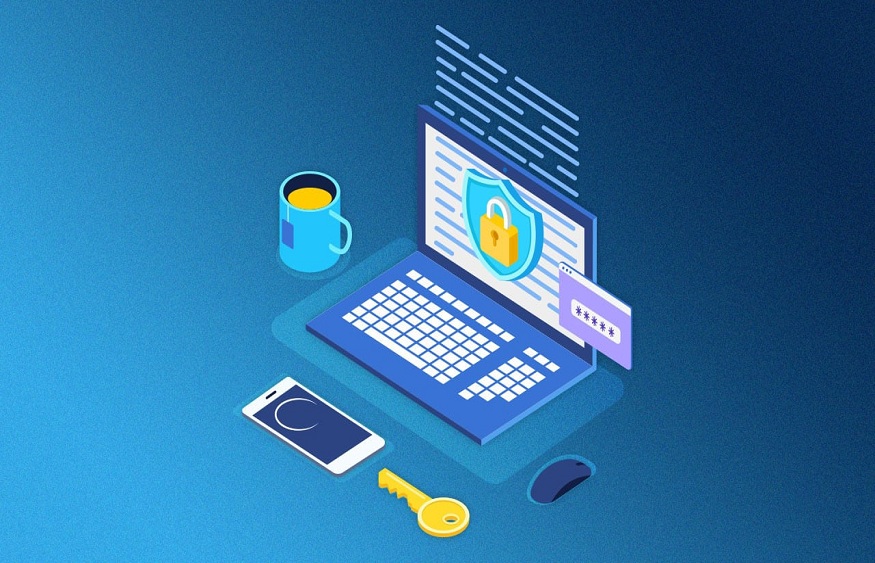Safeguarding Your Website with Top-tier Protection and Security Measures
In today’s rapidly advancing digital landscape, websites have become the cornerstone of online presence for individuals, businesses, and organizations alike. They serve as virtual gateways, connecting us to a global audience, and empowering us to share information, transact, and interact like never before. However, with this newfound connectivity comes a pressing concern – the ever-looming threat of cyberattacks.
Website security has emerged as a critical imperative for every website owner and administrator. The internet is brimming with malicious actors seeking to exploit vulnerabilities, steal sensitive data, disrupt services, or even deface websites for their nefarious gains. As we increasingly rely on the online realm for personal, professional, and financial matters, the risks associated with weak website security become all the more pronounced.

We dig into the complicated realm of website security in this comprehensive article, providing light on the potential risks and implications of ignoring this critical component. We look at the several layers of security that can defend your digital realm from a variety of dangers. We give actionable information and best practices to help website owners to develop effective defenses and maintain a safe online environment, ranging from fundamental security procedures to cutting-edge technologies.
Protect Your Login Form and Improve Website Security by Strengthening Your Website’s Login
When it comes to improving the security of your website, protecting your login form is critical. The login form acts as a portal for authorized individuals to access sensitive information and complete critical transactions. It does, however, present an appealing target for malevolent actors looking to gain unauthorized access. You may dissuade and frustrate potential attackers by reinforcing your login form with robust security mechanisms like as multi-factor authentication, CAPTCHA difficulties, and login rate limitation.
Failure to secure this important entry point exposes your website to brute-force assaults, credential stuffing, and other malicious vulnerabilities, potentially resulting in data breaches, unauthorized account access, and reputational harm. Taking proactive efforts to secure your login form is an important component of any comprehensive website security strategy, as it instills trust in your users and demonstrates your dedication to protecting their sensitive information.
Hackers frequently use a simple approach to infiltrate a WordPress website, focusing on the login form. They try various combinations of usernames and passwords in order to obtain illegal access to the website’s backend.
To effectively prevent such assaults, it is critical to increase the login form’s security. This entails putting in place measures to limit the number of login attempts from a given IP address and automatically blocking that IP after a certain number of failed attempts. Using this method, brute force attacks can be efficiently stopped, considerably improving your website’s overall security.
Hackers frequently employ brute force approaches in their efforts to get unauthorized access to WordPress login credentials. Using safety measures such as plugins, you can limit the number of login attempts permitted for each user. This large barrier considerably increases the level of effort for hackers attempting to enter your website, giving an additional layer of security.
The Crucial Role of SSL Certificates in Securing Your Website
SSL certificates play a pivotal role in securing your website and ensuring a safe digital environment for your users. By encrypting the data transmitted between a user’s browser and your web server, SSL certificates protect sensitive information, such as login credentials, financial details, and personal data, from falling into the hands of malicious actors.
Beyond data encryption, SSL certificates also establish trust and credibility, as they display visual indicators like the padlock icon and “https” in the URL, reassuring visitors that their connection is secure. Moreover, search engines prioritize SSL-secured websites in search results, boosting your website’s visibility and online reputation. Embracing SSL certificates is no longer an option but a necessity in today’s cybersecurity landscape, safeguarding both your website and the trust of your valued visitors.
An SSL certificate provides digital assurance by encrypting data sent between a website and its visitors. This encryption is crucial in protecting sensitive information such as login credentials, financial information, and personal data.
A website becomes vulnerable to data interception by hostile parties when it lacks a valid SSL certificate. To mitigate this danger, you must guarantee that your website has an SSL certificate. As a result, your website will automatically redirect any non-HTTPS queries to the HTTPS protocol, ensuring that all data communicated between your website and its visitors is safe and secure. Taking this proactive strategy improves the security of your website and encourages user trust.
The Crucial Imperatives of WordPress Updates, Website Maintenance, and Broken Link Fixing
Regularly updating your WordPress elements, including themes, plugins, and the core itself, ensures optimal performance, enhanced security, and compatibility with the latest web standards. Consistent website maintenance is equally vital, as it keeps your site running smoothly, free from technical glitches, and provides a seamless user experience, thereby bolstering engagement and retaining visitors.
Additionally, addressing broken links promptly and redirecting them to relevant pages fosters user satisfaction, improves SEO rankings, and prevents potential loss of valuable traffic. Embracing these imperatives not only safeguards your website’s credibility and functionality but also solidifies your online reputation, making it a formidable force in the digital landscape.
To ensure the minimization of potential threats, regular updates for WordPress, themes, and plugins must be prioritized. These upgrades can be performed manually or by using specialized plugins that automatically upgrade them to the most recent versions.
Maintaining an up-to-date website involves addressing issues like outdated content, broken links, poor-quality links, and URL errors. These factors have a significant impact on website traffic, user engagement, and conversions.
By eliminating problematic links, you can enhance the user experience and boost search engine rankings by redirecting obsolete or broken links to fresh, relevant pages. This approach ensures that potential customers don’t abandon your site due to URL problems or outdated content; instead, they are redirected to the appropriate pages or presented with updated information.
Running a website requires continuous maintenance and adjustments. However, these adjustments can sometimes render the site temporarily inaccessible or lead to a subpar user experience. To tackle this concern, the WP Maintenance plugin can be utilized, enabling you to put your website into maintenance mode during the update process. This ensures a seamless update procedure and avoids any negative experiences for your users.
The Importance of Regular Website Security Inspections and Vulnerability Scans
Regular website security inspections and vulnerability scans are of paramount importance in safeguarding your digital assets from potential threats. By conducting periodic audits, you can identify and address security weaknesses, ensuring that your website remains resilient against evolving cyber threats.
Vulnerability scans play a crucial role in detecting potential entry points for attackers, such as outdated software, misconfigurations, or unpatched vulnerabilities. These proactive measures not only enhance the overall security posture of your website but also instill confidence in your users, demonstrating your commitment to protecting their sensitive data and fostering a safe online environment.
Using automated tools, vulnerability scans examine your website for well-known vulnerabilities, including outdated software, broken links, weak passwords, and unsecured plugins. By detecting these vulnerabilities, you can swiftly address them, mitigating the risk of potential breaches.
Conducting these evaluations enables you to maintain a proactive stance against cyber threats, guaranteeing robust and current defenses for your website. Consistent security audits and vulnerability scans offer reassurance, assuring that you actively shield your website and its invaluable data from potential cyberattacks.
Conclusion
In conclusion, safeguarding your website with top-tier protection and security measures is vital in today’s digital landscape. Website security has become a critical imperative, with the internet teeming with malicious actors seeking to exploit vulnerabilities and steal sensitive data. By prioritizing login form protection, implementing SSL certificates, performing regular updates, and conducting security inspections and vulnerability scans, you can ensure a safe online environment for your users and maintain a resilient security posture. Embracing these proactive measures demonstrates a commitment to user safety, builds trust with your audience, and fortifies your website against potential cyber threats.
Infographic created by CIO Technology Solutions, Tampa’s Leading Managed IT Company</p




